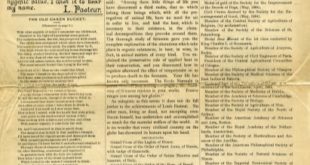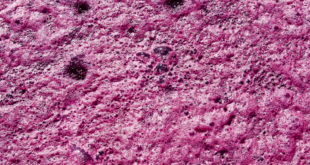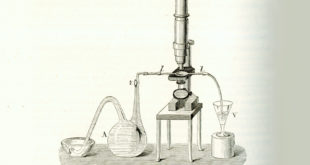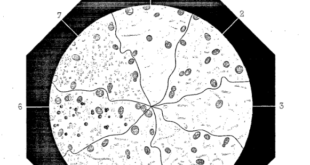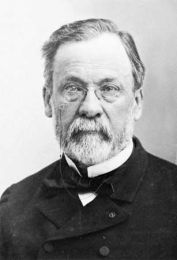
Louis Pasteur first devoted himself to the study of fermentation in 1856, when he is approached by M. Bigo, a local industrialist in Lille, and asked for advice concerning the production of alcohol in beet juice. Apparently Bigo was experiencing large vats of beet juice turning sour instead of alcoholic as expected. Pasteur agreed to help with the problem and this began his first experiment in the area of fermentation.
Pasteur visited the factory where the beet juice was being produced and observed the differences in some of the vats. He smelled the fermentation process in the first batch. In that specific vat, the juice smelled fine and the juice was clearly fermenting into alcohol. But in other vats the odor was sour and in some cases putrid. A thin layer of grime covered the top of the juice in these vats. This both puzzled and interested Pasteur and motivated him into looking at exactly what was going on during the fermentation process. Not only was this scientifically interesting, but solving this problem would save Bigo great deals of money from spoiled beet juice and would also do the local community a service.
Pasteur’s Beet Juice Experiment
Pasteur took several samples with him back to his laboratory at the university. Some samples were of good fermentation and others of spoiled fermentation. When reviewing the samples of good fermentation with the microscope, he noticed nothing peculiar, just the usual yest cells that were known to be associated with fermentation. Yeast played a role in fermentation, but it wasn’t until later that Louis Pasteur discovered exactly what the yeast were doing.
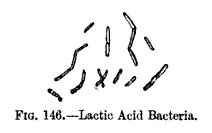
Pasteur’s experiments do not show how to kill the invading lactic acid bacteria, but he is able to assist Bigo in reducing the ability of the bacteria to infect the beet juice. By understanding that one small bacteria can multiply and take over the vat, Bigo must ensure that no bacteria enter the vat from the beginning. Spoiled vats must be cleaned and the juice disposed of properly. Louis Pasteur was seen as a local hero and continued his work on fermentation.
Fermentation and Germ Theory
A year later Pasteur publishes a paper on lactic fermentation as well as a paper on alcoholic fermentation to the Académie des sciences. While vacationing in Arbois with his family, Pasteur examines diseased wines and observes the presence of germs analogous to those found in lactic fermentation. His research would lead him to the discovery of anaerobic (oxygen-deprived) life and gave him the insight to disprove the theory of Spontaneous Generation, for which he receives the Prix Alhumbert in 1862. Other important work followed that eventually leads to one of the greatest discoveries of mankind to date: Germ Theory. All with its beginnings in fermentation.
 Pasteur Brewing Louis Pasteur – Science, Health, and Brewing
Pasteur Brewing Louis Pasteur – Science, Health, and Brewing 